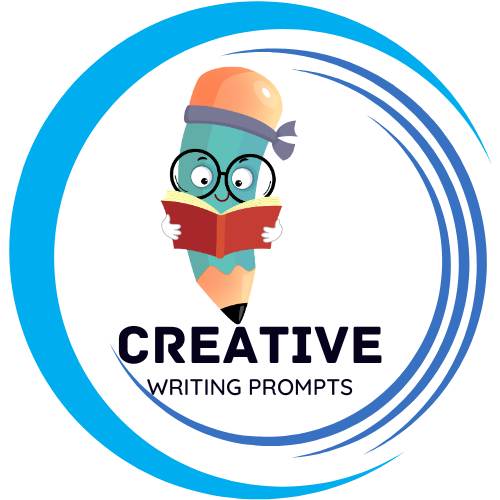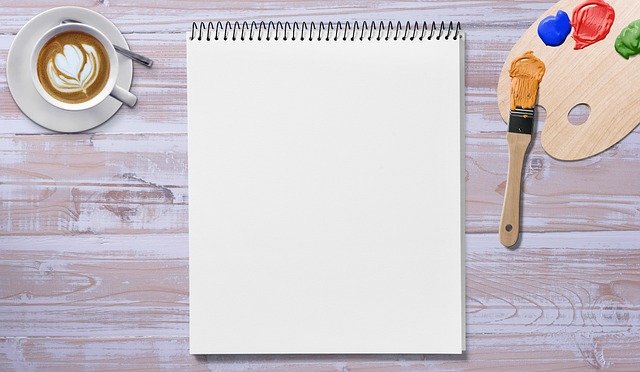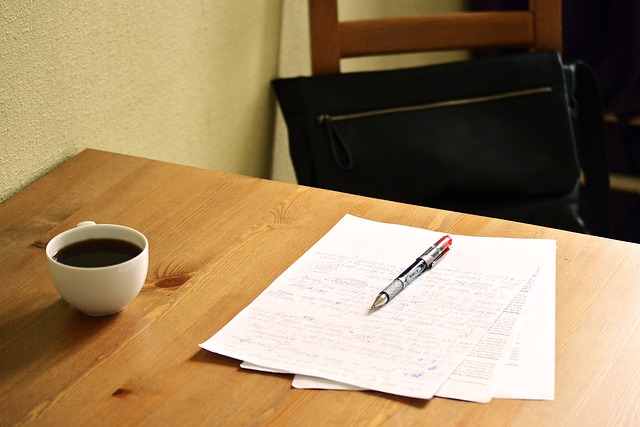In today’s digital age, the art of communication has transformed drastically. However, amidst all the technological advancements, one classic form of correspondence still holds its ground in the professional world – block format business letters. Whether you’re drafting a formal letter to a potential employer, submitting a professional proposal, or reaching out to your clients, mastering the art of block format business letters can make all the difference. In this guide, we will take you through the ins and outs of this timeless style, equipping you with the skills to convey your thoughts effectively and leave a lasting impression. So, let’s dive in and discover the key elements that will help you master the art of block format business letters, giving your professional communication the polished touch it deserves.
Contents
- Block Format Business Letters: An Introduction
- Understanding the Block Format: Structure and Formatting Guidelines
- Crafting a Professional Salutation: Dos and Don’ts
- Body Paragraphs: Clear and Concise Communication
- The Art of Effective Conclusions: Leaving a Lasting Impression
- Showcasing Professionalism: Proper Use of Tone and Language
- Polishing Your Block Format Business Letter: Proofreading and Editing Tips
- Frequently Asked Questions
- The Conclusion
Block Format Business Letters: An Introduction
Block format is a widely used format for business letters. In this format, the content of the letter is aligned to the left margin with no indentation for paragraphs. It offers a clean and professional look, making it easy to read and understand. Whether you are writing a cover letter, a business proposal, or a formal communication, understanding and following the block format is essential in creating a positive impression on your recipient.
One of the key features of block format is the use of single spacing between paragraphs, creating a clear distinction between each section of the letter. This helps in organizing your thoughts and making the letter visually appealing. Additionally, block format allows for easy scanning of the content by the reader, as key sections such as the salutation, body, and closing are clearly separated by blank lines.
There are several advantages of using block format business letters. Firstly, it conveys a sense of professionalism and showcases your attention to detail. Secondly, it facilitates easy understanding and comprehension of the letter’s content. Moreover, by adhering to a standardized format, you demonstrate respect for the recipient’s time and expectations. So whether you are communicating with a client, a potential employer, or a business partner, utilizing block format ensures that your message is clear, concise, and visually appealing.
Understanding the Block Format: Structure and Formatting Guidelines
The block format is commonly used for various types of writing, including business letters, cover letters, and formal emails. Its straightforward structure and consistent formatting make it easy to follow and understand. This format is especially useful when you want to convey professionalism and ensure your message is clear and organized.
In the block format, each section of your document starts on a new line, creating a visual separation between different parts. This includes the heading, salutation, body paragraphs, and closing. The text is aligned to the left margin, creating a clean and neat appearance. One important guideline to remember is to use a single space between each paragraph, which helps with readability and makes your document more visually appealing.
When formatting your document using the block format, it is recommended to use a professional and legible font, such as Arial or Times New Roman, with a font size of 11 or 12. Additionally, it’s important to choose a standard paper size, such as A4 or letter size, and maintain consistent margins of around 1 inch on all sides. By following these structure and formatting guidelines, you can ensure that your document is well-presented and easy to read, leaving a positive impression on your readers.
Crafting a Professional Salutation: Dos and Don’ts
When it comes to professional communication, the salutation sets the tone for the entire message. Whether you’re sending an email, writing a cover letter, or reaching out to a potential client, your salutation should be thoughtful and appropriate. To ensure you make a strong impression right from the start, follow these dos and don’ts for crafting a professional salutation.
Dos:
- Address your recipient by their proper title and name. Use ”Mr.” or “Ms.” followed by their last name, unless you have a close professional relationship.
- When in doubt, use a neutral salutation like ”Dear” or “Hello.” Keep it respectful and avoid overly informal greetings.
- Research the cultural norms if you’re communicating with someone from a different background. Consider factors such as formal titles or different greeting customs.
- Use a clear and concise salutation. Avoid lengthy or convoluted introductions that might confuse or distract the recipient.
- Proofread your salutation and ensure spelling and grammar are correct. Pay attention to details; it shows professionalism and respect for the recipient.
Don’ts:
- Avoid using generic salutations like “To Whom It May Concern” or ”Dear Sir/Madam” unless you have absolutely no other option. It’s always best to personalize your greeting whenever possible.
- Don’t use nicknames or informal terms unless you have an established rapport. Stick to professional, formal language until you’re certain it’s appropriate to do otherwise.
- Never assume gender or make assumptions about a person’s marital status when addressing them. When in doubt, opt for gender-neutral salutations.
- Refrain from using excessive exclamation marks or emojis. While they may show enthusiasm, they can also be seen as unprofessional in certain contexts.
- Avoid being too familiar, especially with people you’ve recently met or have little acquaintance with. Maintain professionalism in your salutation until you establish a more casual relationship.
Remember, your salutation is your first opportunity to engage with your recipient, so take the time to tailor it to the individual and the context of your communication. A well-crafted salutation demonstrates respect, attention to detail, and professionalism, setting the stage for a positive and productive interaction.
Body Paragraphs: Clear and Concise Communication
Effective communication is crucial in today’s fast-paced world, where information overload has become the norm. To ensure your message is understood and remembered, it is essential to craft clear and concise body paragraphs. By employing a few simple strategies, you can enhance the clarity and impact of your written or spoken communication.
One key principle to keep in mind is to prioritize specificity and avoid vague or ambiguous language. Clearly stating your ideas enables readers or listeners to grasp your intended meaning without confusion. Use concrete examples or anecdotes to illustrate your points, making them more relatable and tangible. Additionally, employ strong and precise vocabulary, avoiding unnecessary jargon or excessive verbiage. Remember, brevity is the soul of effective communication!
Another technique to foster clarity is using formatting wisely. Break up long, dense paragraphs into shorter ones to improve readability. Utilizing HTML features such as bullet points or numbered lists can help to organize information and highlight key points. Bold key phrases or ideas to draw attention, but use it sparingly to avoid overwhelming the reader. Remember, your goal is to keep your audience engaged and to convey your message in the clearest and most concise way possible.
The Art of Effective Conclusions: Leaving a Lasting Impression
When it comes to crafting effective conclusions, the ultimate goal is to leave a lasting impression on your audience. A carefully constructed conclusion can tie together all the key points of your piece and provide a sense of closure that lingers in the minds of your readers or listeners. Here are a few essential tips to help you master the art of creating impactful conclusions:
- Summarize your main points: One of the most effective techniques to leave a lasting impression is to summarize your main arguments or ideas. By recapping the key takeaways, you provide a quick refresher for your audience and reinforce the core messages you want them to remember.
- Leave them with a thought-provoking question: Pose a question that challenges your audience to think deeper about the topic at hand. This encourages engagement and sets the stage for further exploration and discussion even after they have finished reading or listening to your piece.
- End with a powerful quote or anecdote: A well-placed quote or a captivating anecdote can have a profound impact on your audience. This technique adds an extra layer of emotional connection and can inspire reflection or action long after your conclusion has been read or heard.
Remember, the conclusion is your last chance to make a strong impression, so make each word count. By summarizing your main points, posing thought-provoking questions, or incorporating impactful quotes or anecdotes, your conclusion will leave a lasting impression on your audience and ensure they remember your message.
Showcasing Professionalism: Proper Use of Tone and Language
In order to showcase professionalism, it is crucial to pay attention to the tone and language used in communication. The way we express ourselves can greatly impact how others perceive us, and it is important to come across as competent, respectful, and approachable. Here are some key tips for using tone and language effectively:
- Be clear and concise: When communicating in a professional setting, it is essential to convey your message clearly and concisely. Avoid using jargon or complex language that might confuse others.
- Show respect and courtesy: Treat others with respect and use polite language. Adopt a friendly yet professional tone, and avoid using offensive or derogatory language that may offend or alienate your audience.
- Avoid ambiguity: Ambiguous language can cause confusion and misunderstandings. Be specific and precise in your choice of words to ensure that your message is clear and easily understood by everyone.
Furthermore, it is important to adapt your tone and language depending on the situation and the audience you are addressing. Whether you are writing an email, participating in a meeting, or giving a presentation, it is essential to adjust your tone and language to match the context. In formal situations, maintain a professional and formal tone, while in more casual settings, you can be a bit more relaxed without sacrificing professionalism. By consistently using the appropriate tone and language, you can effectively showcase your professionalism and leave a positive impression on others.
Polishing Your Block Format Business Letter: Proofreading and Editing Tips
Once you have finished writing your block format business letter, the next crucial step is to proofread and edit it. Careful proofreading ensures that your letter is error-free, professional, and conveys your intended message clearly. Here are some helpful tips to polish your letter:
- Spell check: Run a spell check on your document to catch any spelling mistakes or typos that you might have missed. Be sure to review any flagged words and make the necessary corrections.
- Grammar and punctuation: Pay close attention to the grammar and punctuation in your letter. Double-check the use of commas, periods, and other punctuation marks. Ensure that your sentences are clear and concise, and that your grammar is correct.
- Layout and formatting: Check that your letter is properly formatted with a consistent font, font size, and line spacing. Make sure your paragraphs are well-organized and that there are no unnecessary line breaks.
- Tone and language: Review your letter for tone and language. Ensure that the tone is appropriate for a professional business letter and that your language remains clear and respectful. Avoid using jargon or slang that might confuse the reader.
Remember, taking the time to proofread and edit your block format business letter will enhance its overall quality and professionalism. Don’t rush through this step; it’s worth investing the extra effort to ensure that your letter leaves a positive impression on the recipient.
Frequently Asked Questions
Q: Why is mastering block format business letters important in the professional world?
A: Mastering block format business letters is crucial as it helps you present a polished and professional style in your communication, which is highly valued in the business world.
Q: What exactly is block format for business letters?
A: Block format refers to a specific layout style for business letters where all text is left-aligned, and paragraphs are separated by a blank line. The date, sender’s address, recipient’s address, salutation, body paragraphs, and closing are all aligned along the left margin.
Q: What are the key elements of a block format business letter?
A: The key elements of a block format business letter include the sender’s address, the date, the recipient’s address, a salutation, body paragraphs, a closing, and the sender’s name and title.
Q: Are there any specific guidelines for writing the sender’s address in a block format business letter?
A: Yes, while writing the sender’s address, it is essential to include your complete address, including street name, city, state, and ZIP code. Also, ensure that the sender’s address is aligned along the left margin.
Q: How should the recipient’s address appear in a block format business letter?
A: The recipient’s address should include the recipient’s full name, their job title (if applicable), the name of the organization they represent, the street address, city, state, and ZIP code. Like the sender’s address, it should be aligned along the left margin.
Q: What are some salutation options for block format business letters?
A: Depending on the level of formality desired, you can use salutations such as “Dear Mr./Ms. [Last Name],” “Dear [First Name],” or “To whom it may concern.” The salutation is followed by a comma.
Q: How should the body paragraphs be written in a block format business letter?
A: The body paragraphs should be concise and focused. Start each paragraph with an indentation and ensure that the text is left-aligned. Maintain a natural flow in your writing to clearly convey your message.
Q: What closing phrases are appropriate for block format business letters?
A: Common closing phrases for block format business letters include “Sincerely,” “Regards,” or ”Yours faithfully.” Remember to place a comma after the closing phrase.
Q: Is there a specific format for including the sender’s name and title in a block format business letter?
A: Yes, at the end of the letter, include your full name and job title (if applicable) below the closing phrase. This information should also be left-aligned.
Q: Are there any standard practices for proofreading block format business letters?
A: Absolutely! It is imperative to proofread your letter for grammar, spelling, and formatting errors. Additionally, double-check the accuracy of addresses, dates, and names to ensure a professional impression.
Q: Can you offer any additional tips to enhance the overall professional style of block format business letters?
A: Certainly! Besides mastering the formatting, always use professional language, maintain a concise and polite tone, and address the recipient appropriately. Keep your letter focused and relevant to your intended message. Also, avoid using jargon or overly complex language that may confuse the reader.
Q: Where can I find examples of well-executed block format business letters?
A: You can find examples of block format business letters in various business communication books, websites, or by searching for letter templates online. Additionally, many professional writing courses also offer sample letters to help you gain a better understanding of the style.
The Conclusion
In conclusion, mastering the art of block format business letters is crucial for a polished professional style. Follow these tips and guidelines to enhance your communication skills and make a positive impression in the business world.









